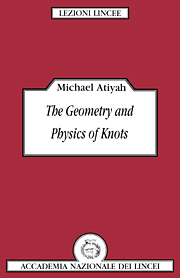7 - The Feynman integral formulation
Published online by Cambridge University Press: 31 December 2009
Summary
The Chern–Simons Lagrangian
So far we have presented the Jones–Witten theory from the Hamiltonian point of view. This gave functors
surface Σ → finite dimensional vector space Z(Σ)
3-manifold Y with Σ = ∂Y
→ vector Z(Y)∈ Z(Σ)
starting from the data of a compact Lie group G and an integer, k the level.
This Hamiltonian approach is mathematically rigorous, although it is not yet entirely developed.
In this chapter we shall present Witten's Feynman pathintegral approach. It is not mathematically rigorous, but it is conceptually simple, and provides a natural starting point for the theory.
Fix a compact Lie group, G, which for simplicity we take to be SU(n). In the Feynman approach, one uses the Chern-Simons Lagrangian. Let Y be a closed oriented 3-manifold. Consider A, the space of all G-connections on the trivial G-bundle over Y.
For any connection A its curvature FA is a Lie-algebravalued 2-form. In three dimensions, the dual to a 2-form is a 1-form, i.e. *FA is a 1-form. However, A is an affine space, and so its tangent space at any point consists of Lie-algebravalued 1-forms.
Thus the curvature F can be viewed as a 1-form on A Its value on a tangent vector to A at A is given by multiplying by FA and integrating over Y, contracting on the Lie algebra variables. Let
g = group of gauge transformations
= Map (Y, G).
Clearly g acts on A; and F is g-invariant. Moreover in the fibration (with singularities)
F vanishes in the vertical (fibre) direction, and thus comes from the base. So F is a well-defined 1-form on A/g.
It turns out that F is a closed 1-form.
- Type
- Chapter
- Information
- The Geometry and Physics of Knots , pp. 52 - 65Publisher: Cambridge University PressPrint publication year: 1990



